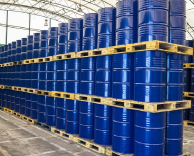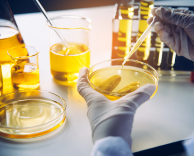What is Lubrication? Meaning, Applications, Challenges, and Types
Introduction
Lubrication is the process of applying a substance, typically oil, grease, or solid lubricants—to reduce friction, wear, and heat generation between moving parts. It plays a critical role in industrial machinery, automotive systems, and various mechanical applications. Without proper lubrication, machines would suffer from premature failure, inefficiency, and costly downtime.
In this article, we will explore lubrication meaning, its functions of lubrication, applications across different industries, types of lubrication systems, challenges in ensuring effective lubrication, and the various lubrication types available today.

What is Lubrication?
Lubrication is a fundamental aspect of mechanical engineering, where a lubrication system introduces a lubricant to form a protective film between two interacting surfaces, reducing direct contact and minimizing friction. This not only enhances efficiency but also extends the lifespan of machinery and components.
Define Lubrication
Lubrication is defined as the process of reducing friction and wear between surfaces in motion through the application of a lubricating substance. It ensures the smooth operation of mechanical components by minimizing resistance and preventing metal-to-metal contact.
Key Functions of Lubrication:
- Friction Reduction: Decreases resistance between surfaces, reducing energy losses.
- Wear Protection: Prevents metal-to-metal contact, minimizing wear and tear.
- Heat Dissipation: Transfers and dissipates excess heat generated by moving parts.
- Corrosion Prevention: Protects surfaces from oxidation and rust formation.
- Contaminant Removal: Helps remove debris, dirt, and particles that can cause damage.
Types of Lubrication Systems
Different machines and industries use specific types of lubrication systems to ensure proper performance and efficiency. The key lubrication systems include:
1. Boundary Lubrication System
- Occurs when the lubricant film is very thin, and the surfaces experience occasional contact.
- Common in stop-start conditions and high-load applications.
- Used in engine startup, gear drives, and low-speed machinery.
2. Hydrodynamic Lubrication System
- A full-film lubrication system where a thick layer of lubricant completely separates moving surfaces.
- Typically used in high-speed rotating equipment like turbines and pumps.
3. Hydrostatic Lubrication System
- Uses an external pump to supply lubricant under pressure, ensuring a continuous film between surfaces.
- Commonly used in heavy-load machinery like industrial presses.
4. Elastohydrodynamic Lubrication System
- Found in rolling elements like ball bearings, where lubricant films deform under pressure but still prevent contact.
- Essential for high-load applications like railway tracks and aircraft landing gear.
5. Mixed Lubrication System
- A combination of boundary and hydrodynamic lubrication, where some areas experience full-film lubrication while others have partial metal contact.
- Seen in internal combustion engines and gear systems.
Applications of Lubrication
Lubrication is essential in various industries and applications, ensuring smooth and efficient operation of machinery and equipment.
1. Industrial Machinery
Manufacturing plants, power plants, and heavy industries rely on lubrication to maintain operational efficiency. Lubrication uses in this sector include:
- Bearings
- Gears and gearboxes
- Hydraulics
- Compressors
2. Automotive Sector
Vehicles require proper lubrication for optimal performance and longevity. Applications include:
- Engine oils for internal combustion engines
- Transmission fluids for smooth gear shifts
- Brake fluids for enhanced braking efficiency
3. Aerospace Industry
Aircraft components operate under extreme temperatures and pressures, making specialized lubricants crucial for:
- Jet engines
- Hydraulic systems
- Landing gear mechanisms
4. Marine Industry
Ships and offshore equipment require lubrication to withstand harsh environments and saltwater exposure, covering applications such as:
- Marine engine oils
- Propeller shaft lubrication
- Deck machinery
5. Food and Pharmaceutical Industries
Specialized food-grade lubricants ensure machinery runs smoothly without contaminating products. Applications include:
- Conveyor belts
- Food processing machinery
- Packaging equipment

Challenges in Lubrication
Despite its importance, effective lubrication faces several challenges, including:
1. Lubricant Contamination
Dirt, water, and debris can degrade lubricant quality, reducing its effectiveness and leading to increased wear.
2. Incorrect Lubricant Selection
Using the wrong type of lubricant can cause inadequate lubrication, overheating, and equipment failure.
3. Over or Under-Lubrication
Applying too much lubricant can cause leakage and attract contaminants, while insufficient lubrication results in excessive wear.
4. Temperature and Environmental Factors
Extreme temperatures, moisture, and chemical exposure can alter lubricant properties, making proper selection and monitoring crucial.
5. Inadequate Maintenance and Monitoring
Lack of regular inspections and improper storage of lubricants can lead to premature machinery failure and increased operational costs.
Types of Lubricants
Lubricants come in different forms, each designed for specific applications and working conditions.
1. Liquid Lubricants (Oils)
- Mineral Oils: Derived from petroleum and commonly used in industrial and automotive applications.
- Synthetic Oils: Engineered for high-performance applications with better thermal stability and oxidation resistance.
- Biodegradable Oils: Eco-friendly lubricants used in environmentally sensitive industries.
2. Semi-solid lubricants (Greases)
- Lithium-based Grease: Multipurpose grease used in bearings and automotive applications.
- Calcium-based Grease: Offers good water resistance for marine and industrial applications.
- Silicone Grease: Used in electrical applications for its high-temperature stability.
3. Solid Lubricants
- Graphite: Used in extreme temperature applications and dry lubrication systems.
- Molybdenum Disulfide (MoS₂): Ideal for high-pressure and heavy-load applications.
- PTFE (Teflon): Provides excellent friction reduction in various applications.
Conclusion
Lubrication is an indispensable aspect of machinery maintenance, ensuring reduced friction, enhanced efficiency, and prolonged equipment lifespan. Proper selection, application, and monitoring of lubricants help industries mitigate operational risks, improve productivity, and lower maintenance costs. Understanding what is lubrication, types of lubrication systems, and the functions of lubrication can help businesses implement effective lubrication strategies for long-term success.





